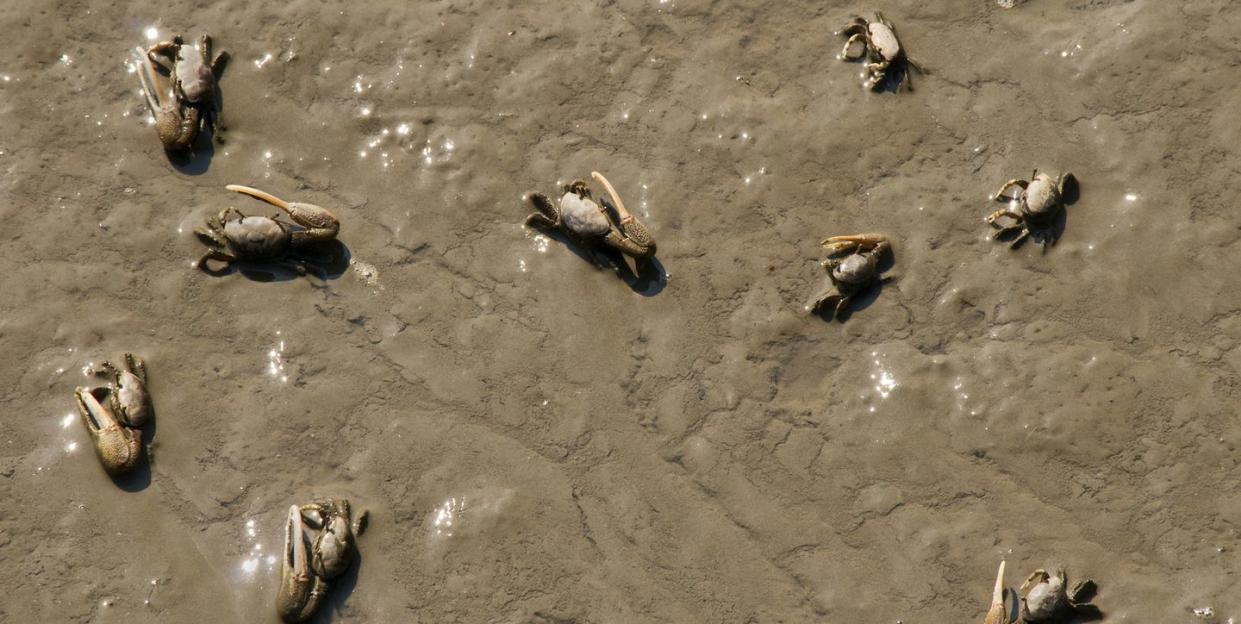The Chinese Climate Hoaxsters Are Even Putting Crabs in the Elevators

Those clever Chinese climate hoaxsters have managed to get their lies—to say nothing of seawater—to seep into disparate corners of human endeavors. In one case, as The New York Times tells us, they’ve managed to prank even those institutions set up to monitor what the hoaxsters are doing. Study this, the ocean is saying.
Sitting at the end of Louisiana State Highway 56, where dirt dissolves into wetlands and then the Gulf of Mexico, the laboratory, the W.J. DeFelice Marine Center, has successfully weathered many hurricanes since it opened its doors in 1986. It stands 18 feet above the ground on pillars with pilings that extend more than 100 feet underground. Its walls can withstand winds of up to 250 miles per hour.
But the water is coming. Around the country, from New Jersey to Massachusetts, Virginia to Oregon, education centers and marine laboratories like this one are bracing against rising seas and a changing climate. The assault from climate change is slower but more relentless than any storm, and will ultimately do more damage. It threatens researchers’ ability to study marine environments up close at a time when it’s more vital than ever to understand them.
The parking lot at the DeFelice Marine Center, the heart of the Louisiana Universities Marine Consortium of some two dozen institutions, was once high and dry. It now floods several dozen times a year, occasionally causing the facility to close because of the difficulty of getting across the lot and into the building. Officials predict that, without action, the lab might need to shut down several dozen days each year within the next 10 to 15 years. The corrosive saltwater attacks the structure and has risen up through the soil into buried electrical cables, at one point causing a blackout. Some floods are accompanied by droves of fiddler crabs that sometimes find their way into the elevators.
As the Times makes clear, marine laboratories all over the country are facing the same difficulties as the DeFelice Center, except for the crabs in the elevators. This includes the Woods Hole Oceanographic Institute on Cape Cod, which is probably the most famous of them all. Scientists will be scientists, however.
At the Louisiana center, Ms. Conover sees educational value in their problems. Along with its mission as a scientific research facility, it is also a center for environmental education with visits from some 5,000 students each year. “If our parking lot is flooding when a group is here, we definitely talk about why we’re flooding on that given day, when five years ago we wouldn’t, given the same conditions.” That example, she said, “gives the perspective of what our coastal communities are dealing with.”
In an office packed with toys and a sign reading “Mischief Managed” — a reference to the Marauder’s Map in Harry Potter — she said “nature gives us the content we need to teach.” Yes, the fiddler crabs are gross, she acknowledged, “but awesome in their grossness.”
“Awesome in their grossness” describes so much these days.

Meanwhile, on the far side of the world, but closer to the home office of the Chinese hoaxsters, their endless pranks have occasioned a three-rail environmental shot that puts in peril the snow leopard, my nominee for the world’s most beautiful animal. This is not crabs in the elevator. This is a threat from another kind of leopard. From The Third Pole:
“We couldn’t believe that it was the camera trap photo of a common leopard captured in prime snow leopard habitat,” Hussain said. “The common leopard has never been reported in the Chitral Gol National Park before.” According to Hussain, field experts believe that it is likely that climate change caused the common leopard to intrude on the snow leopard’s habitat.
“There is a likelihood that the common leopard might have come from the closest common leopard habitat, but that is yet to be known. The presence of the common leopard in the snow leopard’s territory can be dangerous for the snow leopard due to its aggressive nature.”
Nawaz added, “In the Passu valley, we met a guide who complained about increased snow leopard attacks on livestock in their village, which led us to install some camera traps there as well. To our surprise, the camera trap pictures revealed the presence of a common leopard in the area. From the same camera traps, we found out that the snow leopard was also using the same trail, which was striking for us.”
They think of everything, those clever Chinese climate hoaxsters. Drown the facilities studying the hoax. Create inter-species civil wars with the added bonus of introducing invasive species with a taste for domesticated livestock. To hell with canaries and coal mines. In this, it’s all just crabs in the elevators.
Respond to this post on the Esquire Politics Facebook page here.
You Might Also Like


